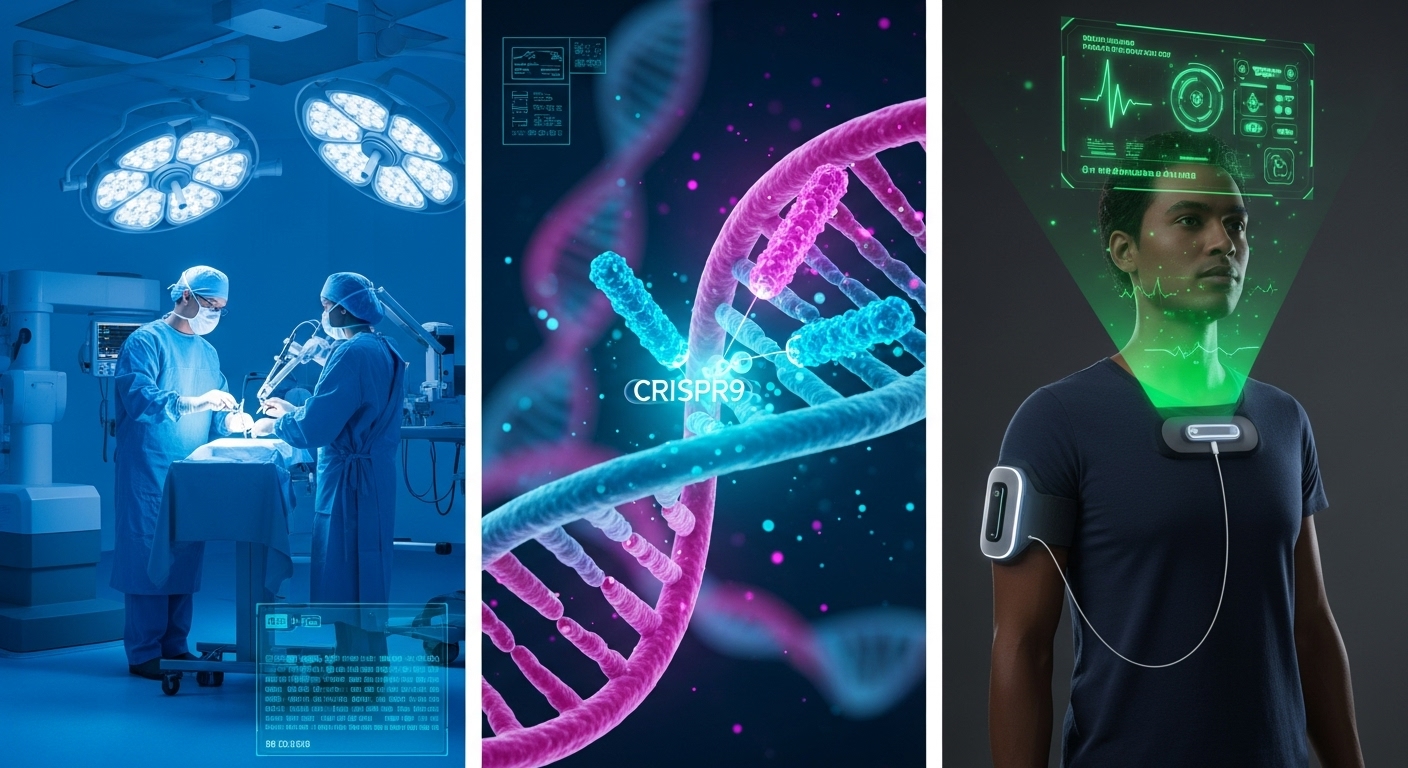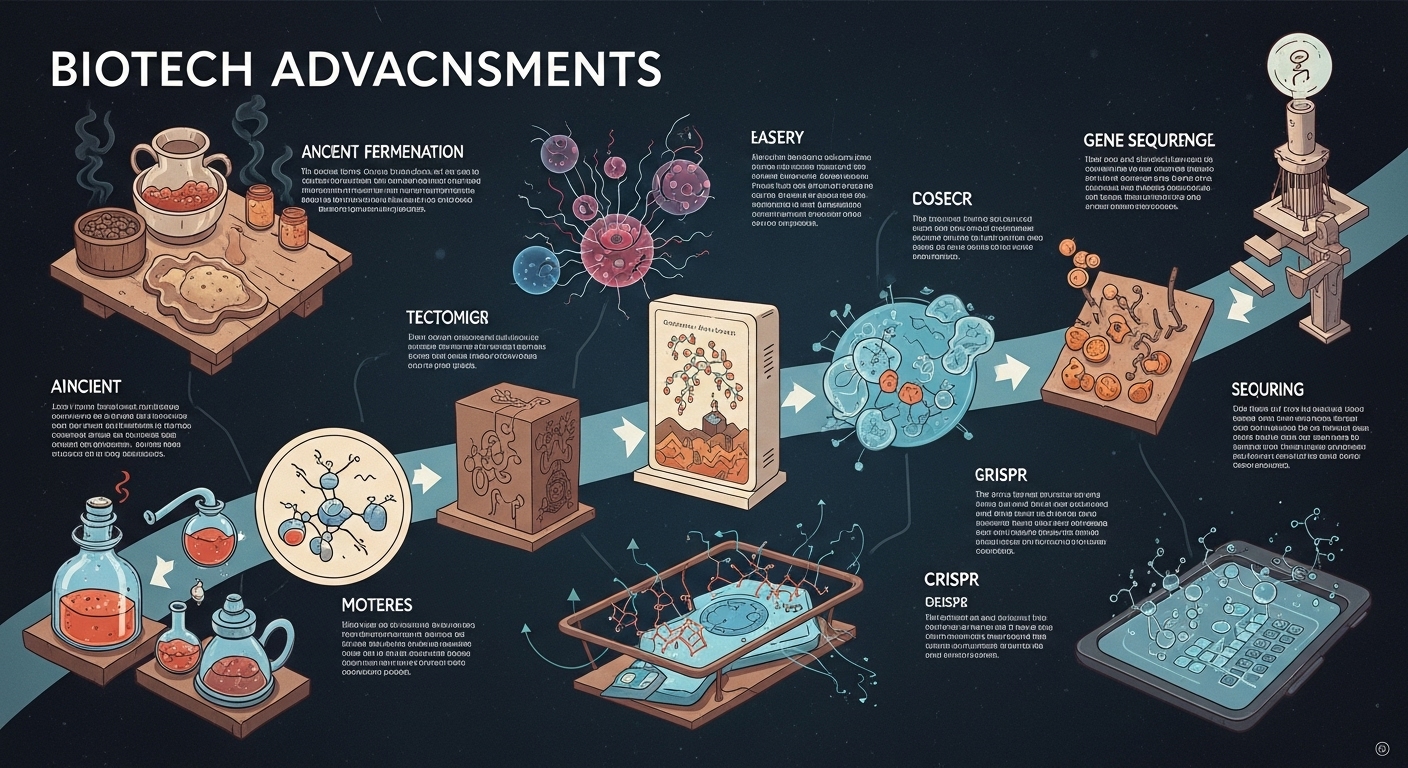Medical technology has advanced at a remarkable pace in the last few decades, changing the way healthcare is delivered, diseases are treated, and patients are supported. From life-saving surgical procedures to wearable health devices, technology is reshaping medicine in ways that were unimaginable a generation ago. These innovations are not only improving outcomes but also making healthcare more efficient, accessible, and personalized. Exploring the top innovations in medical tech provides a clear understanding of how science and technology are converging to transform lives.
The Evolution of Medical Technology
Medicine has always been closely linked to technology. Centuries ago, simple tools like the stethoscope and thermometer marked breakthroughs in patient care. Later developments such as X-rays and antibiotics revolutionized diagnosis and treatment. In the twenty-first century, the pace of innovation has accelerated as computing power, artificial intelligence, robotics, and biotechnology combine to create solutions that improve both prevention and treatment. The modern healthcare landscape is built on innovations that were once considered science fiction, and the trajectory suggests even greater advancements in the near future.
Robotics in Surgery
Robotic-assisted surgery is one of the most important innovations in medical technology. Systems such as robotic arms guided by skilled surgeons have made procedures more precise, less invasive, and safer. Unlike traditional open surgeries that require large incisions, robotic-assisted surgeries often use tiny incisions, reducing scarring, minimizing blood loss, and speeding up recovery. Surgeons benefit from enhanced visualization and greater control during complex procedures, which improves outcomes for patients. From cardiac surgery to orthopedic and gynecological procedures, robotics has redefined what is possible in the operating room.
Artificial Intelligence in Diagnosis
Artificial intelligence has made a major impact on the field of diagnosis. AI algorithms are now capable of analyzing medical images such as X-rays, MRIs, and CT scans with remarkable accuracy, sometimes outperforming human radiologists in detecting subtle signs of disease. These systems can identify early-stage cancers, spot fractures, or predict the likelihood of developing conditions like heart disease based on large datasets. Beyond imaging, AI is being used to analyze electronic health records, predict patient outcomes, and even assist doctors in making complex decisions. By reducing errors and speeding up diagnosis, artificial intelligence is helping doctors provide faster and more effective treatments.
Wearable Health Devices
Wearable devices have shifted healthcare beyond hospital walls and into the daily lives of patients. Smartwatches and fitness trackers can monitor heart rates, sleep patterns, oxygen levels, and even detect irregularities like atrial fibrillation. These devices empower individuals to take control of their health while also providing doctors with continuous data for more informed decisions. In patients with chronic diseases such as diabetes or heart conditions, wearable devices can alert them to potential problems before they become emergencies. This proactive approach is shifting healthcare from treatment to prevention, reducing costs and improving quality of life.
Telemedicine and Remote Care
Telemedicine has been one of the most transformative innovations, particularly during global health crises when in-person visits became difficult. With telemedicine, patients can consult doctors via video calls, share medical records digitally, and receive prescriptions remotely. This innovation has expanded access to healthcare for people in rural or underserved areas who might otherwise struggle to see specialists. Remote monitoring tools combined with telehealth platforms allow doctors to track patients’ vital signs, adjust treatments, and provide follow-ups without requiring patients to leave their homes. Telemedicine has not only improved convenience but also shown potential for lowering healthcare costs and reducing the burden on hospitals.
Genomic Medicine and Personalized Treatments
Advances in genetic research and sequencing technologies have paved the way for personalized medicine. Instead of prescribing treatments based on averages, doctors can now design therapies tailored to an individual’s genetic makeup. This approach is especially valuable in oncology, where genomic testing helps identify the specific mutations driving a patient’s cancer and guides targeted therapies. Personalized medicine also plays a role in predicting the risk of inherited diseases, allowing individuals to take preventive steps earlier in life. The ability to analyze DNA quickly and affordably has made genomics one of the most influential innovations in modern healthcare.
3D Printing in Medicine
3D printing has introduced groundbreaking possibilities in medicine. Prosthetics, implants, and even organs are being produced using 3D printing technologies. For patients in need of bone replacements or dental implants, 3D printing allows for custom designs tailored precisely to their anatomy. Surgeons use 3D-printed models to plan complex procedures, practicing on replicas of a patient’s organs before the actual surgery. In the future, the possibility of printing tissues and organs using a patient’s own cells may address the critical shortage of donor organs worldwide. This innovation holds promise for transforming transplantation and reconstructive medicine.
Regenerative Medicine and Stem Cell Therapy
Regenerative medicine aims to repair or replace damaged tissues and organs, often using stem cells. Stem cells have the unique ability to develop into different types of cells, offering potential treatments for conditions such as spinal cord injuries, heart disease, and neurodegenerative disorders. Advances in this field are making it possible to regenerate tissues that were once thought irreparable. Clinical trials and research continue to expand possibilities, bringing hope to patients with diseases previously considered incurable. The potential of regenerative medicine to restore function and improve lives is one of the most exciting developments in healthcare.
Nanotechnology in Treatment and Drug Delivery
Nanotechnology is another innovation reshaping medical treatments. By designing tiny particles at the molecular level, scientists can deliver drugs more precisely to targeted cells. For example, cancer therapies that once caused widespread side effects can now be delivered directly to tumors, sparing healthy tissues. Nanoparticles can also be engineered to release drugs slowly over time, improving treatment effectiveness and patient compliance. Beyond drug delivery, nanotechnology is being used in diagnostics, imaging, and even creating nanoscale devices that can monitor health from within the body.
Virtual and Augmented Reality in Healthcare
Virtual reality and augmented reality are enhancing both medical training and patient care. Medical students can practice surgeries in immersive virtual environments, gaining experience without risking patient safety. Surgeons can use augmented reality during real procedures, overlaying digital images of anatomy onto a patient’s body to guide their actions with greater precision. Patients also benefit from VR, particularly in pain management and rehabilitation. Virtual environments are being used to distract patients during painful procedures or to help those with mobility issues perform guided exercises. This fusion of technology and medicine is creating new opportunities for learning, healing, and recovery.
Digital Health Records and Big Data
The move to electronic health records and the rise of big data analytics have revolutionized healthcare systems. Digital records allow for better coordination between providers, reducing errors and improving continuity of care. Big data analytics can process enormous amounts of health information to identify trends, predict outbreaks, and design better public health strategies. For hospitals and clinics, data-driven insights optimize operations and resource allocation. For patients, the ability to access their records empowers them to be more engaged in their healthcare decisions. The integration of digital records with artificial intelligence is set to further enhance personalized care in the future.
Biotechnology and Advanced Drug Development
Biotechnology has played a central role in developing advanced treatments for diseases. Monoclonal antibodies, gene therapies, and biologic drugs are all products of biotech innovation. These treatments have changed outcomes for conditions like cancer, autoimmune disorders, and rare genetic diseases. By harnessing living cells and biological systems, biotechnology has enabled therapies that are more targeted and effective than traditional pharmaceuticals. The rapid development of vaccines using messenger RNA technology is another example of biotech innovation revolutionizing public health.
Smart Implants and Bioelectronic Medicine
Implants have evolved far beyond simple devices. Today, smart implants can monitor health in real time and communicate data to doctors. For example, pacemakers not only regulate heart rhythms but also transmit performance data to physicians. Cochlear implants restore hearing, while advanced prosthetics can respond to neural signals, giving patients greater control. Bioelectronic medicine takes this further by using electrical impulses to modulate the nervous system, offering new treatments for conditions like chronic pain or inflammatory diseases. These innovations blur the line between biology and technology, offering solutions that enhance the human body itself.
Medical Imaging Innovations
Medical imaging has always been central to diagnosis, and innovations continue to improve its capabilities. Modern imaging technologies provide higher resolution, faster results, and less exposure to radiation. Advances like functional MRI allow doctors to study brain activity in real time, while portable ultrasound devices bring imaging capabilities to remote locations. Combined with AI, medical imaging is becoming even more powerful, enabling earlier detection of diseases and better monitoring of treatment progress. These innovations are critical in fields ranging from oncology to neurology.
The Role of Drones and Robotics in Healthcare Logistics
Drones and autonomous robots are being used to improve logistics in healthcare. Drones deliver medical supplies to remote areas, transport lab samples between facilities, and even assist in disaster zones. Robots in hospitals can carry medications, disinfect rooms, and support nursing staff by reducing manual workloads. These tools improve efficiency, reduce the risk of errors, and allow human healthcare providers to focus more on patient care. The logistics side of healthcare may not be as visible as direct treatment, but it plays a crucial role in saving lives and improving outcomes.
Challenges of Medical Technology Innovations
While innovations in medical technology hold great promise, they also bring challenges. Cost is a significant barrier, as advanced technologies are often expensive to develop and deploy. This raises questions about access and equity, particularly in low-income regions. Ethical concerns also arise, especially in areas like genetic editing or data privacy. Regulatory frameworks must evolve to keep pace with rapid innovation, ensuring that new technologies are safe, effective, and used responsibly. Addressing these challenges is essential to maximize the benefits of medical technology while minimizing risks.
The Future of Medical Technology
Looking ahead, the future of medical technology appears boundless. Advances in artificial intelligence, robotics, and biotechnology will continue to push the boundaries of what is possible. Precision medicine will become more widespread, tailoring treatments to individuals at a deeper level. Regenerative medicine may one day eliminate the need for donor organs. Wearable devices and remote monitoring will make healthcare more proactive and preventive, catching problems before they become critical. The integration of different technologies into holistic healthcare systems will create smarter, more responsive care environments.
Conclusion
Medical technology innovations are reshaping the world of healthcare in profound ways. From robotic surgeries and AI diagnostics to personalized medicine and nanotechnology, these advancements are improving outcomes, enhancing efficiency, and empowering both patients and providers. They are not just about treating illness but about creating a future where healthcare is predictive, preventive, and more accessible. While challenges remain, the progress made so far offers a glimpse into a world where technology and medicine work hand in hand to extend life, improve well-being, and unlock possibilities once thought impossible. The top innovations in medical tech are more than inventions; they are lifelines shaping the future of humanity.


